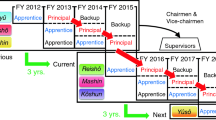Abstract
A current set of concerns in ethnomethodology and conversation analysis includes the question of how conversation analysis (CA) can deal with studies of social structure or studies of talk in institutional settings.
In this paper a focus is placed on how the accomplishment of "work" and "categorization" are interrelated. Two particular instances are examined: a ski school and a package delivery service. Membership categorization is shown to be a complex, on-going, interactive accomplishment. The parties act in ways that are "predicatively-bound" (i.e. predicates of action, rights, obligations, etc.) which allow inferences to be made by each of the parties about the other based on these actions; these enable each to accept/confirm/validate the other's self-categorization and to produce, via their own actions, activities that are congruent with the other's self-categorization. Activities of the parties are category-relevant and category-generative. Thus, "work" or "the work of the organization", (e.g. for Choice, a package delivery service), is being accomplished in and through the talk and interaction of the parties.
Similar content being viewed by others
References
Boden, D. (1994). The Business of Talk: Organizations in Action. Cambridge: Polity Press.
Boden, D. and Zimmerman, D. (Eds.) (1991). Talk and Social Structure: Studies in Ethnomethodology and Conversation Analysis. Cambridge, U.K.: Polity Press.
Drew, P. and Heritage, J. (1992). Talk at Work: Interaction in Institutional Settings. Cambridge: Cambridge University Press.
Garfinkel, H. (1967). Studies in Ethnomethodology. Englewood Cliffs, NJ: Prentice-Hall.
Garfinkel, H. and Wieder, D.L. (1992). Two incommensurable, asymmetrically alternate technologies of social analysis. In G. Watson and R. Seiler (Eds.), Text in Context: Contributions to Ethnomethodology, pp. 175-206. Newbury Park, CA: Sage Publications.
Hester, S.K. and Eglin, P. (1997). Culture in Action, Washington, D.C.: University Press of America.
Jayyusi, L. (1984). Categorization and the Moral Order. Boston and London: Routledge and Kegan Paul.
Lee, J. (1987). Prologue: Talking organisation. In G. Button and J.R.E. Lee (Eds.), Talk and Social Organisation, pp. 19-53. Clevedon: Multilingual Matters.
Sacks, H. (1974). On the analyzability of stories by children. In R. Turner, (Ed.), Ethnomethodology, pp. 216-231. Middlesex, England: Penguin.
Sacks, H. (1992). Lectures on Conversation, Vols 1 and 2. In G. Jefferson (Ed.) with introduction by E.A. Schegloff. Oxford: Basil Blackwell.
Schegloff, E.A. (1979). Identification and recognition in telephone conversation openings. In G. Psathas (Ed.), Everyday Language, pp. 23-78. New York: Irvington.
Schegloff, E.A. (1986). The routine as achievement, Human Studies 9: 111-152.
Schegloff, E.A. (1991). Reflections on talk and social structure. In D. Boden and D. Zimmerman (Eds.), Talk and Social Structure: Studies in Ethnomethodology and Conversation Analysis, pp. 44-70. Cambridge, U.K.: Polity Press.
Watson, D.R. (1978). Categorisation, authorisation and blame-negotiation in conversation, Sociology 12(1): 105-113.
Watson, D.R. (1997). General reflections on 'categorization' and "sequence' in the analysis of conversation. In S.K. Hester and P. Eglin (Eds.), Culture in Action, Washington, D.C.: University Press of America.
Watson, G. and Seiler R. (Eds) (1992). Text in Context: Contributions to Ethnomethodology, Newbury Park, CA: Sage Publications.
Zimmerman, D. (1984). Talk and its occasion: the case of calling the police. In D. Schiffrin (Ed.), Meaning, Form, and Use in Context: Linguistic Applications. Georgetown University Roundtable on Language and Linguistics, pp. 210-228. Washington, DC: Georgetown University Press.
Zimmerman, D. (1992). Achieving context: Openings in emergency calls. In G. Watson and R. Seiler (Eds.), Text in Context: Contributions to Ethnomethodology, pp. 35–51. Newbury Park, CA: Sage Publications.
Author information
Authors and Affiliations
Rights and permissions
About this article
Cite this article
Psathas, G. Studying the organization in action: Membership categorization and interaction analysis. Human Studies 22, 139–162 (1999). https://doi.org/10.1023/A:1005422932589
Published:
Issue Date:
DOI: https://doi.org/10.1023/A:1005422932589




